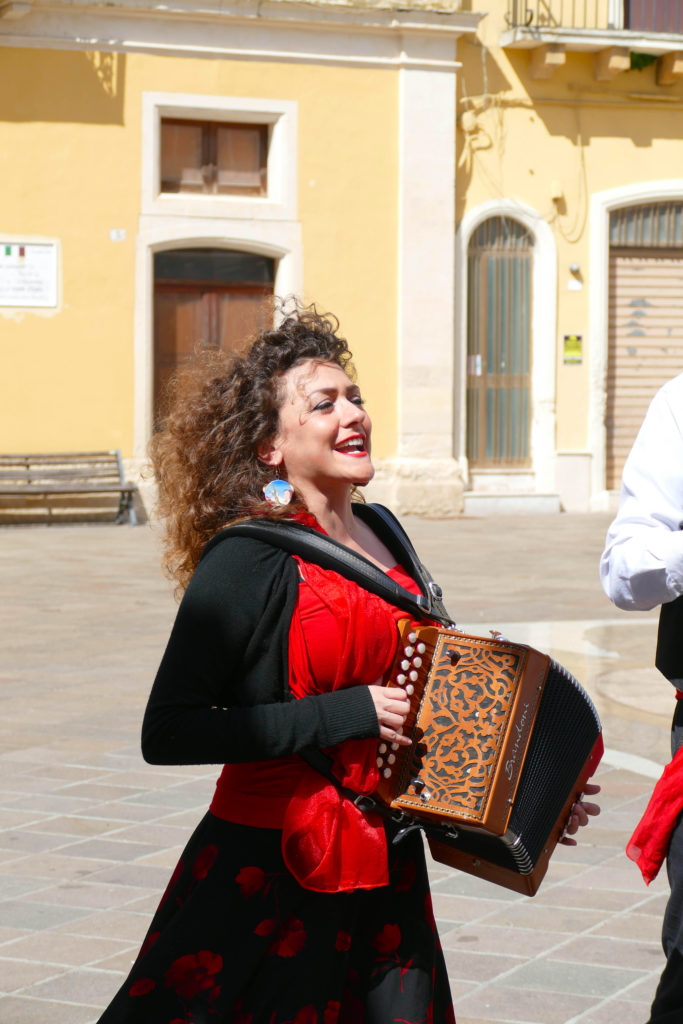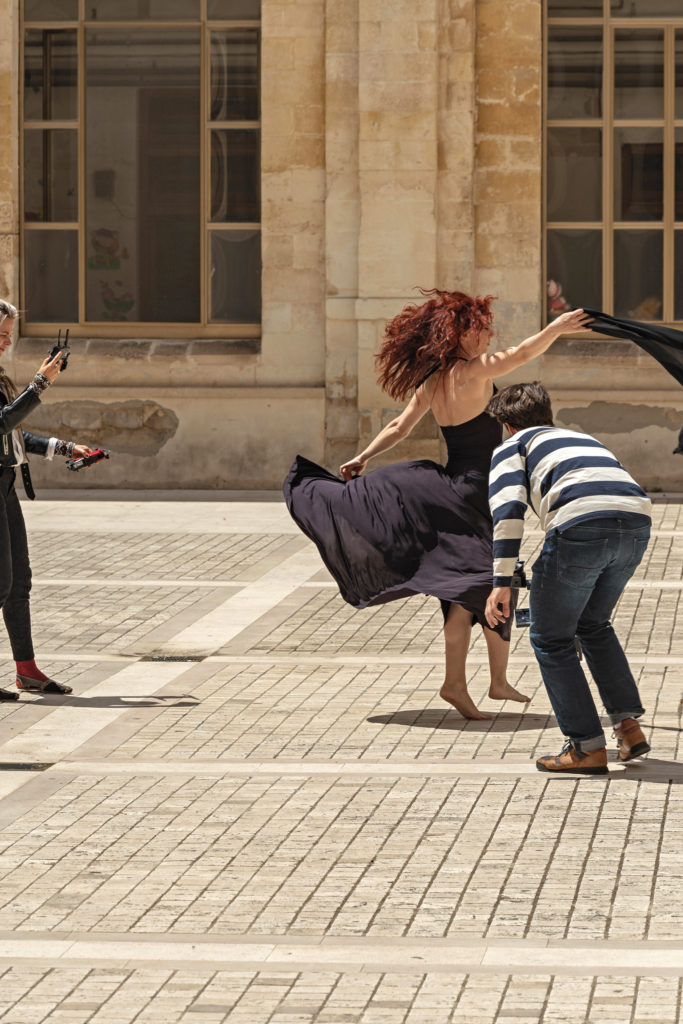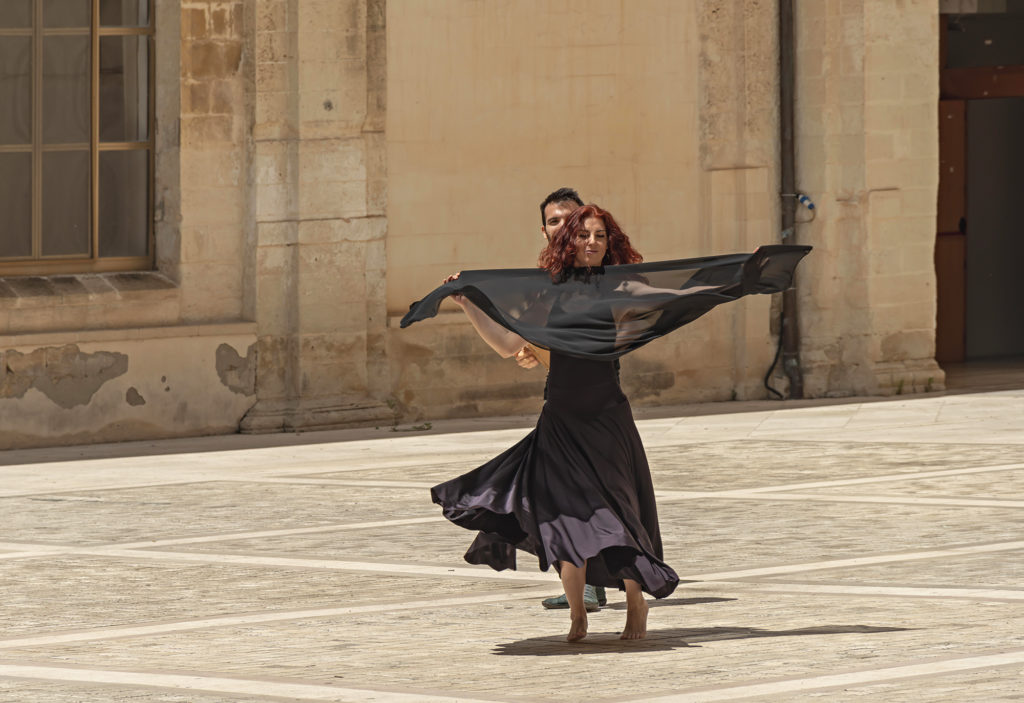Mesmerising melody
Summertime in the Salento and the mesmerising melody from tambourines, guitars and violins fills the heavy evening air. This is the pizzica, a hypnotic traditional dance whose origins mix history and folklore. And it all started with a spider bite.
Once bitten
Legend and lore surround the pizzica. The ballo is a the Salento variant of the Tarantelle family, a magico-religious dance that supposedly cured the effects of spider poison by perspiring thanks to delirium and contortional movement. A spider bite? Yep. According to the history books, tantarism was the hysterical behavior, heightened excitability and restlessness of persons bitten by spiders and the solution were trance-inducing rituals of physically active meditation. In other words, the tarantolati (victims of lycosa tarantula bites) were healed by accelerating music and frenzied dancing.

Local to the territory between Taranto and Salento Leccese, the pizzica was born as one of the solutions, and many consider it linked to ancient Greece and everyone’s favourite party god Dionysus. (Puglia’s Salento was the heart of Magna Grecia in antiquity). Supposedly, a fateful spider bite (pizzica means bite or sting) during harvest time drove women into a wild delirium and the only means to expel the poison was mad dancing, similar to the hedonist rituals of Dionysus’ baccantes. The dance became an aggressive unleashing of sexual desires and casting off of rigid etiquette oppression. Footloose, take note.
The pizzica evolved into an active though trance-like performance of courtship for couples. In 1797, the Taranto nobility showcased the pizzica, officially establishing it in history, as part of a dance event for the visiting King Ferdinand IV of Borbone. By the 20th century, the dance was a folklore phenomenon while the melodic traditions of Salento’s pizzica lingered in local music. Today’s pizzica is a celebration of the territory’s heritage.
Musical Catharsis

Release, desire and healing. Traditionally, couples performed the dance but today, women and men of all ages, alone or in couples dance this hypnotic ballo. Barefoot dancers rhythmically sway to heady beats and aching vocals, while waving handkerchiefs, shawls and scarves, and the rhythm begins to accelerate until it reaches a frenzy. Enticing, carnal and beautiful, the pizzica is also a dance of community as the ronda, musicians playing tambourines, violins and guitars, and spectators, encircle the performers in the ballo.
Consider the pizzica musical catharsis, both dance therapy and tradition.
By Erica Firpo.
